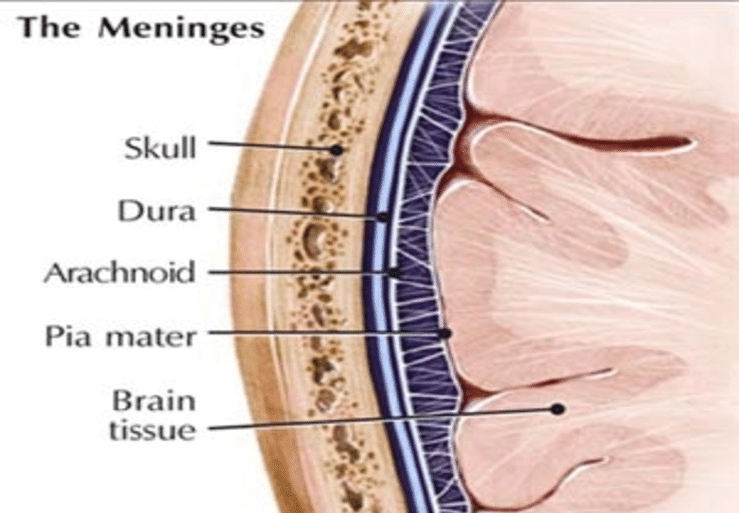Hemorrhagic Stroke
2. Hemorrhagic stroke [Prevalence: 20%] |
- Caused by rupture or leakage of cerebral blood vessels - bleeding - May be the result of: o weakness of a vessel wall o traumatic injury to a vessel |
A. Extracerebral hemorrhages |
- Hemorrhages from the blood vessels in the meninges or on the surface of the brain - Depending on where the blood accumulates, can be further classified into: i) subarachnoid (most common) ii) subdural iii) epidural i. Subarachnoid Bleeding is under the arachnoid, between the arachnoid and the pia mater | Often the result of aneurysm.
Some arise from (AVMs) arteriovenous malformations | ii. Subdural Bleeding is under the dura mater | Hemorrhages involving the dura mater are usually caused by traumatic head injuries in which dural blood vessels are torn or lacerated. | iii. Epidural Bleeding is above the dura, between the dura mater and the skull |

Image Reference: Application of Bio-Inspired Design to Minimize Material Diversity - Scientific Figure on ResearchGate. |
B. Intracerebral hemorrhages |
- Hemorrhages from the brain or brain stem, where bleeding is in the brain tissues - Destroy brain tissue next to white matter tracts, but they usually do not destroy the tracts themselves. Occurrence: ~90% occur in patients with hypertension - Chronic hypertension leads to degenerative changes in the small penetrating arteries, weakening them and creating microaneurysms. Common sites: - Thalamus and basal ganglia (most common) - Brain stem; cerebellum Treatment: - Surgery usually is considered only if the bleeding is life threatening. - Medical management |
References:
Brookshire, R.H. (2007). Introduction to neurogenic communication disorders (7th Ed). St. Louis: Mosby. (page 36- 50)
Fu, Katherine & Moreno, Diana & Yang, Maria & Wood, Kristin. (2014). Bio-Inspired Design: An Overview Investigating Open Questions From the Broader Field of Design-by-Analogy. Journal of Mechanical Design. 136. 111102. 10.1115/1.4028289.